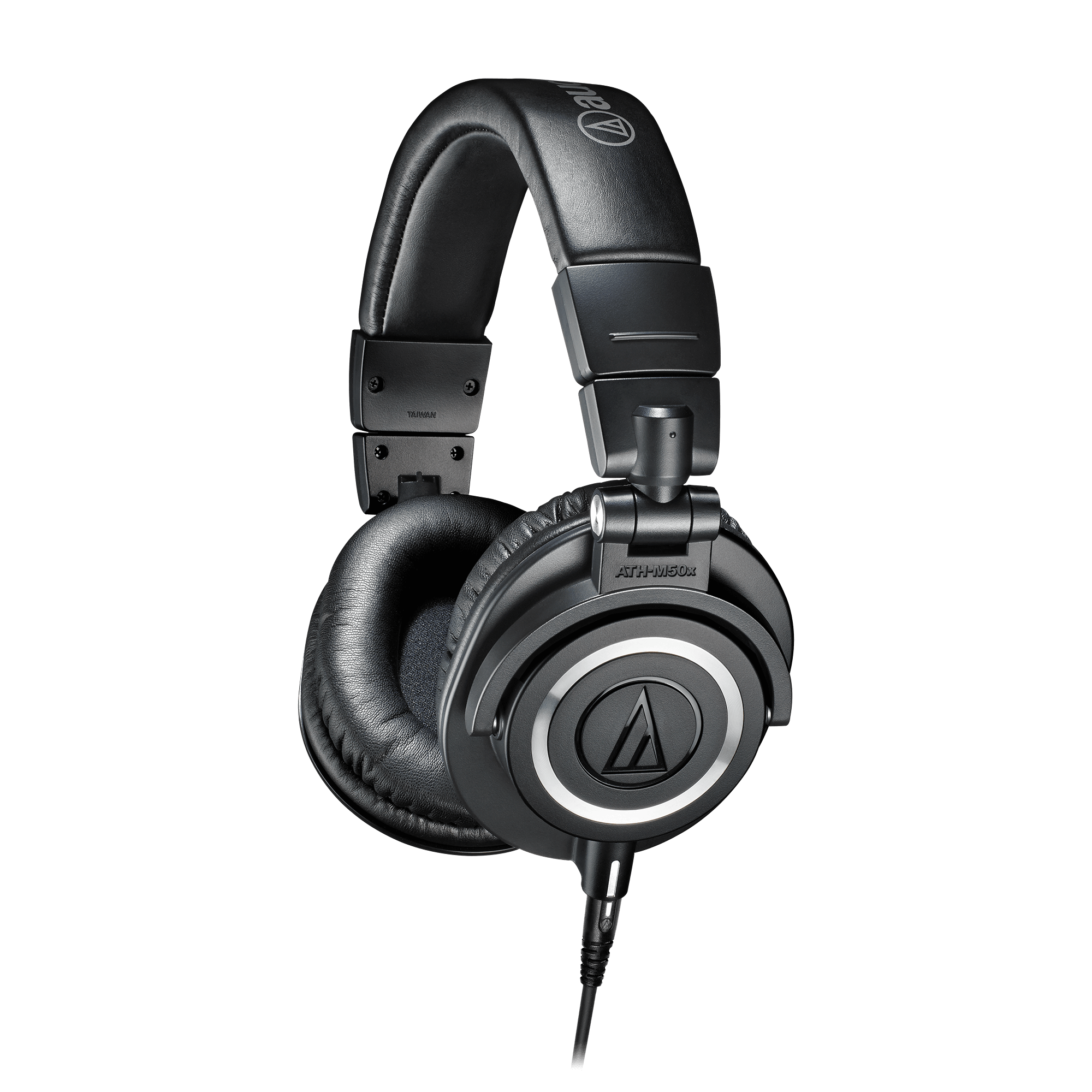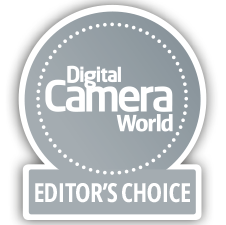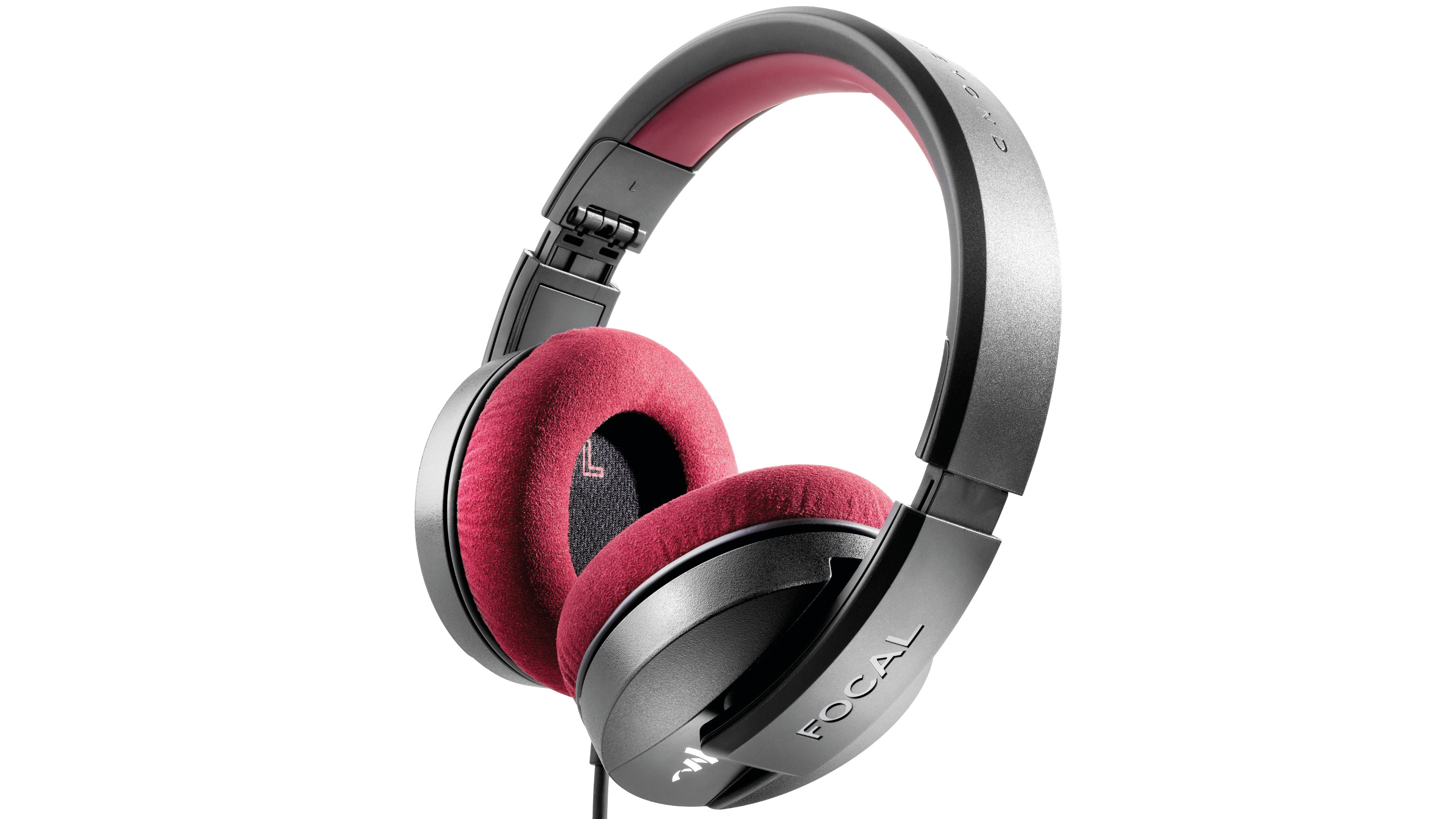The best headphones for video editing: high quality audio for every budget
The best headphones for video editing will ensure you spot every subtlety in your sound

For editing video in a serious capacity, the best headphones for video editing are a must. Quality sound is what sets apart good video from great, and while high-end headphones cost a little more, they'll provide you with clear, tonally-neutral audio, so you won't miss the tiniest detail in your sound editing.
When you're using the best video editing software, you ideally don't want to use the kind of headphones aimed for mass-market music listening, because they tend to up either the bass or treble. In contrast, proper studio headphones (which are also referred to as call monitors, reference headphones, or professional headphones) give equal weighting to bass, midrange, and treble frequencies, giving you a balanced reproduction that will help you to check quality, syncing, and levels more professionally. They're also better at keeping out background noise.
Below, we've listed the best headphones for video editing on the market today. These are a selection of the best studio headphones you can buy — we have included a couple of consumer options, but only ones that meet a very high quality threshold. However, we know not everyone has a sky-high budget, so we have ensured there are budget-friendly options on the list. Read on for our picks — and check out our guide to the best microphones for on-set recording, too.

Ben is the Imaging Labs manager, responsible for all the testing on Digital Camera World and across the entire photography portfolio at Future. With years of experience trialling and testing kit, he's a human encyclopedia of benchmarks when it comes to recommending the best buys.
The quick list

Best overall
Recommended by video editors worldwide, the Beyerdynamic headphones are going to be the best buy for the majority of users, with terrific quality and comfort.

Best for comfort
A comfortable fit is critically important for video editing headphones, especially for marathon sessions. These Focal Listen Professional headphones are perfect.

Best for isolation
While they're a little bulky, the Audio-Technica ATH-M50x headphones are superb for isolation – ideal if you want to minimise distraction and focus on your editing.

Best value
Offering superb value for money, this set of headphones from microphone legends Røde is an excellent economical choice. Cooling gel in the cups helps keep them comfy for long wears.

Best travel-friendly
This pair of high-quality headphones from Sony is notable for being affordable, and coming with a soft carry-pouch. The earcups also fold into the headband for easy transport.

Best for sound quality
Sennheiser's HD 300 PRO headphones aren't cheap, but they provide stunning audio quality and a generously comfortable fit over the ears. They also fold down into the headband.
Load the next products ↴

Best wireless
If you prefer the idea of wireless headphones, these Sony cans are a good pick. They're not cheap, but they offer cutting-edge noise-cancellation technology and a comfy fit.
The best headphones for video editing
Why you can trust Digital Camera World
Best overall
1. Beyerdynamic DT 770 PRO (32 ohms)
Specifications
Reasons to buy
Reasons to avoid
We'll keep this simple. The Beyerdynamic DT 770 PROs are the absolute best headphones for video editing available today.
They come in three variants, each with a different impedance: 32 ohms, 80 ohms, and 250 ohms. Put very simply, the lower the impedance (ohms rating), the easier the headphones are to drive.
The 32-ohm DT 770 PROs are therefore perfectly at home being plugged into a camera, phone, or laptop and should sound great, whereas higher impedance headphones are designed for use with a dedicated headphone amp or professional studio equipment and will otherwise sound too quiet if plugged into a mobile device, even if driven at max volume.
A lower impedance can result in greater bass prevalence, but the 32-ohm DT 770 PROs have been tuned to sound the same as the higher impedance versions and are still designed as pro reference headphones, so shouldn't color your audio with excessive bass; a trait you can find with more fashion-focused consumer cans. The closed-back earcups and leatherette earpads are designed to produce a tighter bass response, and they help to isolate your ears from outside noise.
Most comfortable
2. Focal Listen Professional
Specifications
Reasons to buy
Reasons to avoid
Suffering from sore ears? Comfort is a key factor to the versatility of the Listen Pros. The earcups are made from memory foam, which is designed to provide comfort for long editing stints, plus it forms a circumaural design, meaning the headphones seal around your ears for optimal sound isolation. Focal has also carefully tuned the grip of the headband to be a balanced compromise between comfort and maintaining a good earcup seal.
More broadly the Listen Professionals have, as the name suggests, been designed to be great for both recreational listening and also pro monitoring duties. To this end they've been tuned to produce a clear, transparent soundstage without artificially boosting any bass, midrange or treble, while still making music tracks sound dynamic.
The Listen Professional's 32-ohm impedance means they should sound great when plugged into everything from an iPhone to a high-end headphone amp. An included rigid carry case, 5m cable, 1.4m cable and a 3.5mm-to-1/4-inch jack converter complete the package.
Best for isolation
3. Audio-Technica ATH-M50x
Specifications
Reasons to buy
Reasons to avoid
With their over-ear, closed-back design, the ATG-M50x headphones have the ideal earcup profile for periods of extended wear, while also helping to isolate your ears from outside noise.
The only downside with this level of comfort is slightly reduced portability, as these are bulkier headphones more designed for home use than on location. That said, they have to swivel earcup yokes (the brackets connecting the earcups to the headband), so can be folded flat for a slimmer profile when not in use.
You can also plug these headphones into cameras or mobile devices when on the go, as a 38-ohm impedance means they can be driven by pretty much any audio source; no additional amplification is necessary.
The 45mm drivers feature neodymium magnets and are capable of a respectable 15-28,000Hz frequency response. The sound is also tuned for a flat response, meaning no one section of the frequency range is intentionally or unintentionally boosted, which should make for a more biased sound profile: headphones for video editing should provide a neutral soundscape.
Best value

4. Røde NTH-100
Specifications
Reasons to buy
Reasons to avoid
Since Røde is known for its best-in-class microphones, it makes sense that the Australian manufacturer would eventually get into the headphones business as well. The Røde NTH-100 headphones are a pair of wired consumer cans, but they offer a sufficient degree of audio fidelity to be useful for editing and mixing work. They're comfortable to wear for long periods, with their memory foam incorporating CoolTech gel that is designed to dissipate heat and prevent the headphones from becoming unbearably hot and sweaty,
The sound is excellent, particularly in the mid-ranges, with the headphones boasting a wide frequency response of 5-35,000Hz. Bear in mind that they are on the heavy side at 350g, and don't fold down or come with a carry case, so they're not the best choice for travelling with. But for a home or office-based edit suite, these Røde headphones offer brilliant value.
Best travel-friendly
5. Sony MDR-7506
Specifications
Reasons to buy
Reasons to avoid
Sony's MDR-7500-series headphones are designed for pro studio use, and the entry-level MDR-7506 has developed quite a reputation. 40mm Neodymium drivers are capable of a respectable 10-20,000Hz frequency response, while their 63-ohm impedance means these cans should sound great whether plugged into a laptop , or high-end studio equipment.
The headphones are supplied with a soft carry pouch, and the earcups will even fold up into the headband for more compact transportation. We also like the large, over-ear closed earcups, which are elongated to help them surround most ear sizes and they should help keep outside noise from leaking in.
Best for sound quality
6. Sennheiser HD 300 PRO
Specifications
Reasons to buy
Reasons to avoid
The HD 300 PROs aren't cheap, but they are very well specced. Their 123dB max sound pressure means they're also loud at max volume: good for checking for unwanted subtle background noise in your recordings. That said, to reach their max volume, you may need to be listing through a dedicated amplifier, as the 64-ohm impedance of the HD 300 PROs makes them slightly harder to drive than most of the other headphones on this list.
Even so, they can still be used with camera equipment or a laptop and should produce reasonable volume. As with many monitor headphones, the HD 300 PROs use a closed-back, over-ear earcup design that encloses your ears to increase long-term comfort and passive noise cancellation.
Even if you're blessed with big ears, these Sennheisers should still enclose them with space to spare, as the earcups are generously large. The headband also allows the earcups to fold inward for a more streamlined profile when not in use.
Best wireless
Specifications
Reasons to buy
Reasons to avoid
The WH-1000XM4s aren't designed as reference studio monitors, which is why they're not higher up this list. But their wide 4-40,000Hz frequency response is very respectable. And there's a lot of other good things on offer besides, such as advanced active noise cancellation. This may not be vital when editing in a quiet studio, but could be a neat trick for masking background traffic noise on location, or if you need to edit while on a plane.
The closed earcup design and leatherette pads help add some extra passive noise cancellation for good measure, and overall these cans are lightweight and comfortable. You're free to move while filming or editing thanks to the wireless Bluetooth connection giving up to 10m of range, while the built-in USB-rechargeable battery is said to be good for up to 30 hours runtime.
There's also a 3.5mm wired connection that enables you to use the headphones even if the battery is flat, or should you need to connect to traditional Hi-Fi equipment. A ‘Speak to Chat’ feature lets you talk to someone while the headphones are still on your head. The Ambient Sound Control feature automatically feeds in background noise should you want to know what's going on around you. And you can tune the sound profile to suit your taste using the bundled app.
See our full Sony WH-1000XM4 review
How to choose the best headphones for video editing
When you're editing video for long periods, comfortable earcups are a must. For this reason, studio headphones don't tend to use an in-ear, earbud design, and instead are generally classified as 'on-ear' or 'over-ear'.
On-ear headphones are less common in the studio sector. These earcups rest flat on the surface of your ear, which can be fine for shorter periods, but could cause fatigue after a while.
Over-ear cups – also called circumaural – solve this by adding a thicker perimeter ring of padding around the cup so it sits around your ear, rather than on it. It's a more comfortable solution for long editing stints, and also creates a seal around each ear to seal out background noise - a feature called noise isolation, or passive noise reduction.
Then there's the choice between open-back and closed-back earcups. Closed back are more common in the reference headphone market, as they help to further isolate sound. Open-back earcups will have a vented exterior casing to allow some sound to escape. This can create a wider, airier sound profile, but it also means others around you can hear the audio leakage, and in the worst case it could end up being recorded as background noise by a very sensitive mic.
How we test headphones
At Digital Camera World we test and review all kinds of photo and video accessories, including audio kit like microphones and headphones. Oyur experienced team of journalists and testers have a wide range of experience when it comes to kit, so we know what we're looking for. We test how products stack up against their manufacturer's claims — does a pair of headphones do everything the makers claim it does? Is the noise cancelling effective, is the sound fidelity up to par, are the headphones comfortable to wear for long periods? For video editing especially, the latter point is hugely important. Find out more about how we test and review at Digital Camera World.
FAQs
What frequence response do headphones need for video editing?
Frequence response conveys the breadth of tones that the headphone drivers are able to produce, from the lowest bass notes to the highest treble frequencies. The human ear can usually hear a range from 20Hz up to 20,000Hz (or 20kHz), so a pair of headphones that at least covers this range is a must for video editing. Most boast an even wider response range though, which at the low/bass end can be beneficial, because while you may not be able to hear these frequencies, it is possible to feel them.
Are low or high impedance headphones better for video editing?
Measured in ohms, and symbolized as Ω, this quantifies how easily the speaker drivers are to 'drive' – vibrate – sound waves into your ear. Headphones with a low impedance (below 50 ohms) are easy to drive and don't require additional sound amplification above and beyond what your camera or laptop can produce. High impedance headphones are designed for use with a dedicated headphone amp or pro studio equipment, otherwise they can sound too quiet. On our list, we're only recommending low impedance models to ensure maximum device compatibility.
Are wired or wireless headphones better for video editing?
The best headphones for video editing are generally those that use a traditional corded connection to your device, usually via a good old 3.5mm headphone jack. This ensures the best possible audio fidelity with no risk of degradation or dropout due to wireless interference. More expensive headphones may have the option to unplug the headphone cord from the earcup, so you can swap it out for shorter, longer, straight or coiled cables.
Read more:
Best microphones for vlogging and filmmaking
Best microphone isolation shields
Best boom arms
The best audio recorders for video production
The best video editing monitors
Best keyboard for video editing
Best video-editing monitors
The best camera deals, reviews, product advice, and unmissable photography news, direct to your inbox!
Ben is the Imaging Labs manager, responsible for all the testing on Digital Camera World and across the entire photography portfolio at Future. Whether he's in the lab testing the sharpness of new lenses, the resolution of the latest image sensors, the zoom range of monster bridge cameras or even the latest camera phones, Ben is our go-to guy for technical insight. He's also the team's man-at-arms when it comes to camera bags, filters, memory cards, and all manner of camera accessories – his lab is a bit like the Batcave of photography! With years of experience trialling and testing kit, he's a human encyclopedia of benchmarks when it comes to recommending the best buys.








